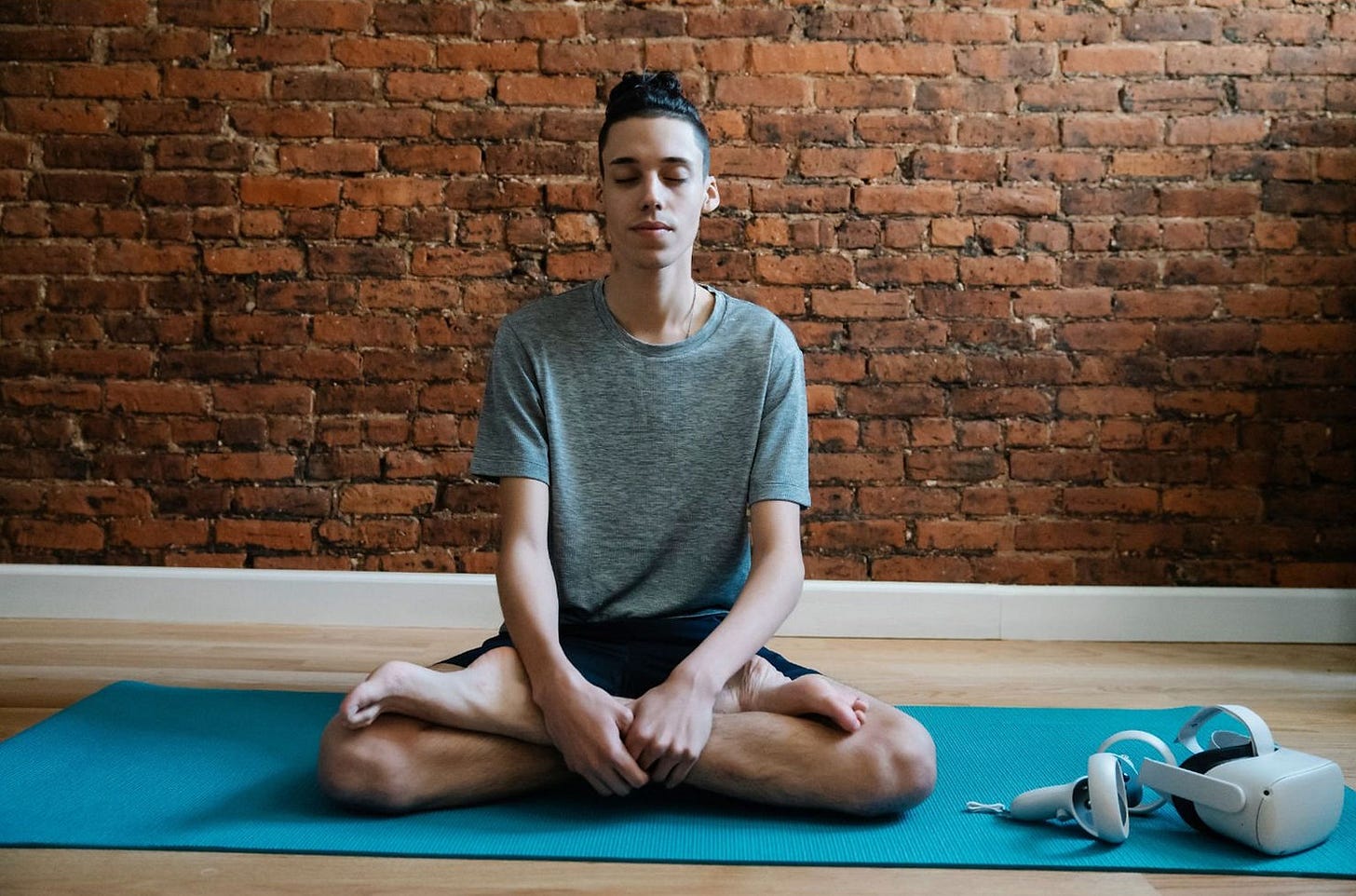How to Stay Awake in Sitting Meditation
Drowsiness might be one of the biggest hurdles you'd have to cross.
If you're anything like me when I first began to meditate, you doze off within 30 seconds of sitting still and closing the eyes.
Drowsiness is one of the biggest obstacles to meditation that many of us experience. And we know that drifting off to sleep is not an option, since our practice is about staying as wakeful as possible.
So what do practitioners do to overcome this obstacle? Drawing from my own experience of working with drowsiness, I'd like to suggest a few strategies you could explore to try and stay more awake during your practice.
FIRST, BE KIND
There is a tendency to feel frustrated and judge ourselves whenever we start to doze off during meditation, and it helps to put this phenomena of drowsiness into perspective. We might consider that staying still and not doing anything particularly active is a new experience for us, and the immediate response from the mind and body may be to switch off, shut down, and go into sleep mode. Based on this understanding, it helps to invite some kindness to ourselves and patience to our practice as we learn to work with the inclination to fall asleep.
POSTURE MATTERS
Serious practitioners pay attention to their posture in meditation. The posture your body takes on informs your state of mind, so a wakeful posture will invite a more alert mind. When sitting for practice, we want to ensure that we are sitting upright with the back straight (but not strained). You may find the body settling into a more relaxed posture in the middle of the practice, leading to the mind drifting off to drowsiness. Whenever this happens, slowly and gently return the body back to a more wakeful posture (as opposed to jerking your body upright), and simply bring your attention back to the practice.
USE THE BREATH
Whenever we find the mind drifting off to sleep or dreamland, we can make use of the breath to remind ourselves that we are present, by breathing in and out deeply a few times to bring more oxygen to the brain. When you feel more alert, bring your breath back to its natural state and return to your meditation.
KEEP THE EYES OPEN
There is no hard and fast rule about closing the eyes during meditation. While keeping the eyes closed is helpful for filtering out distractions and for focusing, many people meditate with their eyes open, which invites more alertness when some light is allowed into our awareness. You can explore opening your eyes for a while whenever drowsiness sets in during practice. My recommendation is to keep the eyelids soft and drop the gaze to the floor in front of you. When the attention stabilizes and you feel alert again, you can once again close the eyes and continue with practice. Or if you prefer, simply keep your eyes open throughout the meditation.
KEEP THE LIGHTS ON
Another way of inviting alertness to your meditation is to avoid practicing in darkness or dim lighting, as this can give the mind the impression that it's time to sleep. Try practicing in daylight, and if after dark works better for you, keep the lights on in the room.
STAY AWAY FROM THE BED
While your bed may seem like the perfect place to meditate in, the familiar comfort of your sheets and pillows may actually serve to induce drowsiness during practice. Allocate your bed for the sole purpose of sleep and rest, and find another space dedicated to meditation. This space should ideally be less comfortable and allow you to adopt a stable yet alert posture as you practice.
ASSESS YOUR PHYSICAL NEEDS
Sometimes, we can try all the above ways to stay alert, but the drowsiness just won't go away. This is perhaps a good time to listen to what your body is trying to tell you. Have you been exhausting yourself? Do you actually need sleep and rest instead? Sleep is an essential function for our body to remain healthy and for the brain to function properly. Getting the rest you need and recharging the body and mind may be the answer to a more wakeful meditation practice!
STAY CURIOUS
Curiosity, an inquisitive and non-judgemental quality of attention, is an essential element we can bring to each moment of our meditation. When we practice being curious about the phenomena of drowsiness, we can observe with interest the tendency of the mind to feel bored and switch off when "nothing interesting" is happening. This curiosity can keep us present to our experience and help us stay awake during practice.
ONE MOMENT AT A TIME
When all else seems to fail, it helps to see this obstacle as an opportunity for us to practice. We learn to approach our practice one moment at a time, and take each moment of the difficult experience as it arrives.
FINALLY, PERSEVERE
Don't allow drowsiness to discourage or deter you from keeping up with your practice. Personally it took me at least six months of consistent daily practice to begin to overcome drowsiness and stay awake throughout a session. No matter how many times I drifted off to sleep, I made sure that I kept bringing myself back to wakefulness and persevered through the full length of the session I had committed to, be it ten minutes, half an hour, or a full hour of practice.
For those of us who have experienced drowsiness in our practice, let me know in the comments if you have any tips or strategies to share!





